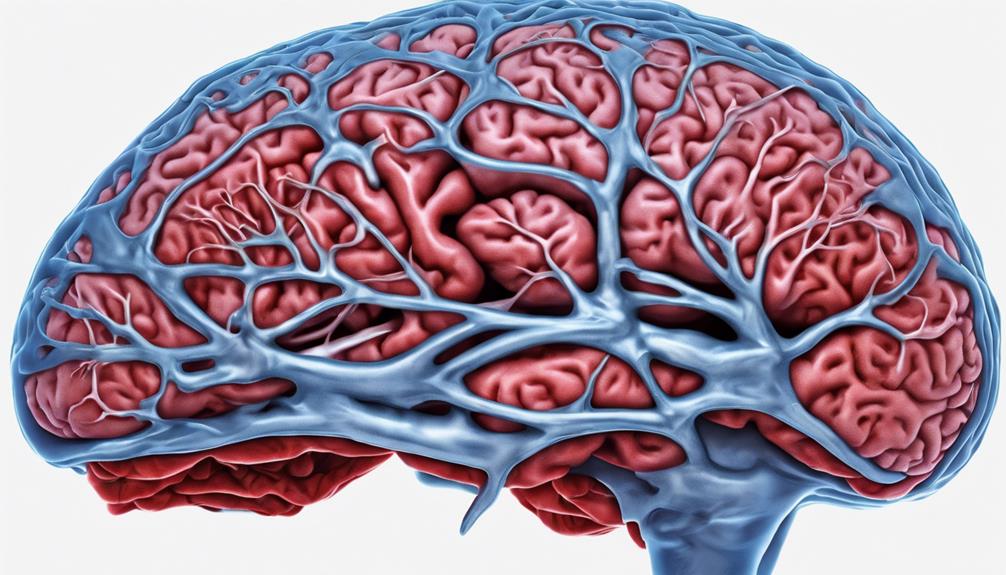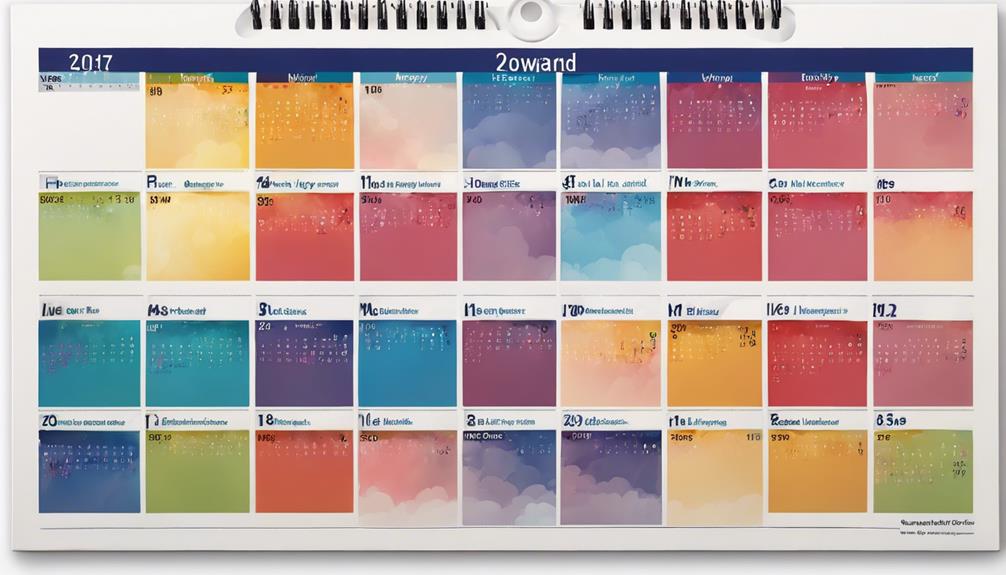Contemplating the effectiveness and accuracy of the Dementia Pain Scale leads us to consider a crucial aspect of pain management for people with cognitive impairment. Recognizing the intricacies of evaluating pain in individuals with advanced dementia is crucial for providing personalized care and enhancing their quality of life.
But what about the challenges faced in implementing this scale in real-world healthcare settings? The complexities of pain assessment in dementia patients go beyond surface-level observations, warranting a deeper exploration of the scale's efficacy and impact.
Key Takeaways
- PAINAD scale aids in evaluating pain in elderly with cognitive impairments.
- Untreated pain in dementia patients linked to negative outcomes.
- Enhanced patient-caregiver communication crucial for accurate pain assessment.
- Abbey Pain Scale improves well-being by tailoring pain management strategies.
Importance of Dementia Pain Scale
The importance of the Dementia Pain Scale, such as the PAINAD, lies in its critical role in evaluating and managing pain in elderly individuals with cognitive impairments. When assessing pain in older adults with dementia, especially those in advanced stages, traditional methods may fall short due to communication barriers. The PAINAD scale offers a structured approach to pain assessment in this population, considering behavioral indicators that are often the only means of expressing discomfort for individuals with cognitive impairment.
Hospitalized older adults with dementia are particularly vulnerable to underrecognized pain, which can lead to adverse outcomes such as prolonged hospital stays and decreased quality of life. By utilizing tools like the PAINAD scale, healthcare providers can more accurately identify and address pain in this population, leading to improved overall care and outcomes.
In the context of cognitive impairment, precise pain assessment using the PAINAD scale is crucial for preventing complications like delirium and ensuring a higher standard of care for older adults with advanced dementia.
Application in Pain Assessment

Application of the PAINAD scale in pain assessment for older adults with advanced dementia involves utilizing a validated tool to effectively evaluate and manage pain in individuals with cognitive impairments. Proper implementation of the PAINAD scale is crucial in identifying and addressing pain in this vulnerable population, as untreated pain can lead to negative outcomes such as sleep disturbances and impaired ambulation.
Additionally, suboptimal postoperative pain management in older adults is linked to an increased risk of developing delirium. By accurately assessing and managing pain using the PAINAD scale, healthcare providers can reduce the likelihood of behavioral symptoms and enhance overall patient outcomes.
It's essential to recognize the significance of employing appropriate pain assessment tools, like the PAINAD scale, to ensure that older adults with advanced dementia receive adequate pain management tailored to their unique needs.
Enhancing Patient-Caregiver Communication
Enhancing patient-caregiver communication plays a crucial role in improving pain assessment accuracy for individuals with dementia. Effective communication strategies, such as utilizing nonverbal cues and gestures, can aid in understanding and interpreting pain in dementia patients. Establishing trust and rapport with patients is essential, as it enhances their willingness to express pain-related symptoms. Educating caregivers on interpreting behavioral changes and facial expressions can facilitate better pain management in dementia patients. Regular training sessions for caregivers on using pain assessment tools like the Abbey Pain Scale can improve communication and pain evaluation.
| Communication Strategies | Benefits |
|---|---|
| Nonverbal cues and gestures | Aid in understanding pain |
| Establishing trust and rapport | Enhances expression of symptoms |
| Educating on interpreting facial expressions | Facilitates better pain management |
| Training on pain assessment tools | Improves communication and evaluation |
Improving Well-Being in Dementia Patients

Improving the overall well-being of dementia patients involves implementing tailored pain management strategies to address their discomfort and enhance their quality of life. When focusing on dementia patients, utilizing tools like the Abbey Pain Scale can significantly impact their well-being.
- Effective Pain Assessment: Proper pain assessment using tools like the Abbey Pain Scale helps caregivers understand and manage the pain experienced by dementia patients.
- Enhanced Communication: Validated pain assessment tools improve communication between caregivers and patients, ensuring that pain levels are accurately identified and addressed.
- Improved Treatment Effectiveness: Utilizing structured approaches like the Abbey Pain Scale enhances the effectiveness of pain management treatments for dementia patients.
- Holistic Care Approach: Assessment tools such as the Abbey Pain Scale contribute to a holistic care strategy, ensuring that pain management is tailored to the individual needs of each dementia patient.
Role in Quality of Care
The utilization of the dementia pain scale plays a crucial role in optimizing the quality of care provided to older adults with cognitive impairments. By incorporating the PAINAD scale into pain assessment protocols for hospitalized older adults with advanced dementia, healthcare providers can accurately gauge pain levels in individuals who may have difficulty expressing their discomfort.
This precise assessment is vital for effective pain management strategies tailored to each patient's needs, ensuring personalized care approaches that enhance overall well-being. Failure to assess and address pain in this population can lead to untreated pain, impacting patient outcomes and potentially resulting in complications.
Consistent use of the dementia pain scale not only improves the quality of care delivered to individuals with cognitive impairment but also contributes to a comprehensive approach to pain management in this vulnerable group, ultimately optimizing their quality of life.
Frequently Asked Questions
What Pain Scale Is Used for Dementia?
For evaluating pain in individuals with dementia, the Pain Assessment in Advanced Dementia (PAINAD) scale is commonly employed. This scale amalgamates behavioral cues such as breathing, vocalization, and facial expressions to gauge pain intensity.
With good inter-rater reliability and internal consistency, the PAINAD scale is a valuable tool for assessing pain in dementia patients.
Regular utilization during activities that may worsen pain can aid healthcare providers in accurately identifying and addressing pain in this population.
Do Dementia Patients Feel Pain Differently?
We understand that dementia patients may experience pain differently due to cognitive impairments. Their challenges in effectively communicating pain levels can lead to difficulties in assessment. Behavioral changes and altered pain perception further complicate the process.
Caregivers must be vigilant in identifying and managing pain in these individuals to prevent negative outcomes. Utilizing validated tools like the Abbey Pain Scale is crucial for accurate pain assessment and subsequent treatment in dementia patients.
How Do You Identify Pain in Dementia Patients?
We identify pain in dementia patients through careful observation of behavioral cues, changes in facial expressions, body language, and vocalizations.
This comprehensive approach allows us to assess discomfort in individuals who may have difficulty communicating their pain verbally.
When Should a Dementia Patient Be Put in a Home?
When evaluating the appropriate time to consider placement in a care home for a dementia patient, we must assess their safety, wellbeing, and the caregiver's ability to provide suitable care.
Factors like the patient's level of independence and the presence of behavioral challenges are crucial considerations.
Care homes offer specialized support tailored to the needs of dementia patients, potentially enhancing their quality of life.
Early planning and ongoing evaluations are key to making informed decisions for the patient's well-being.
Conclusion
In conclusion, the Dementia Pain Scale serves as a compass guiding us through the intricate landscape of pain assessment in individuals with advanced dementia. Like a skilled navigator, this tool helps us chart a course towards improved well-being and quality of care for our patients.
Let the painAD scale be our guiding star, illuminating the path towards effective pain management and enhanced patient outcomes in the challenging terrain of dementia.









